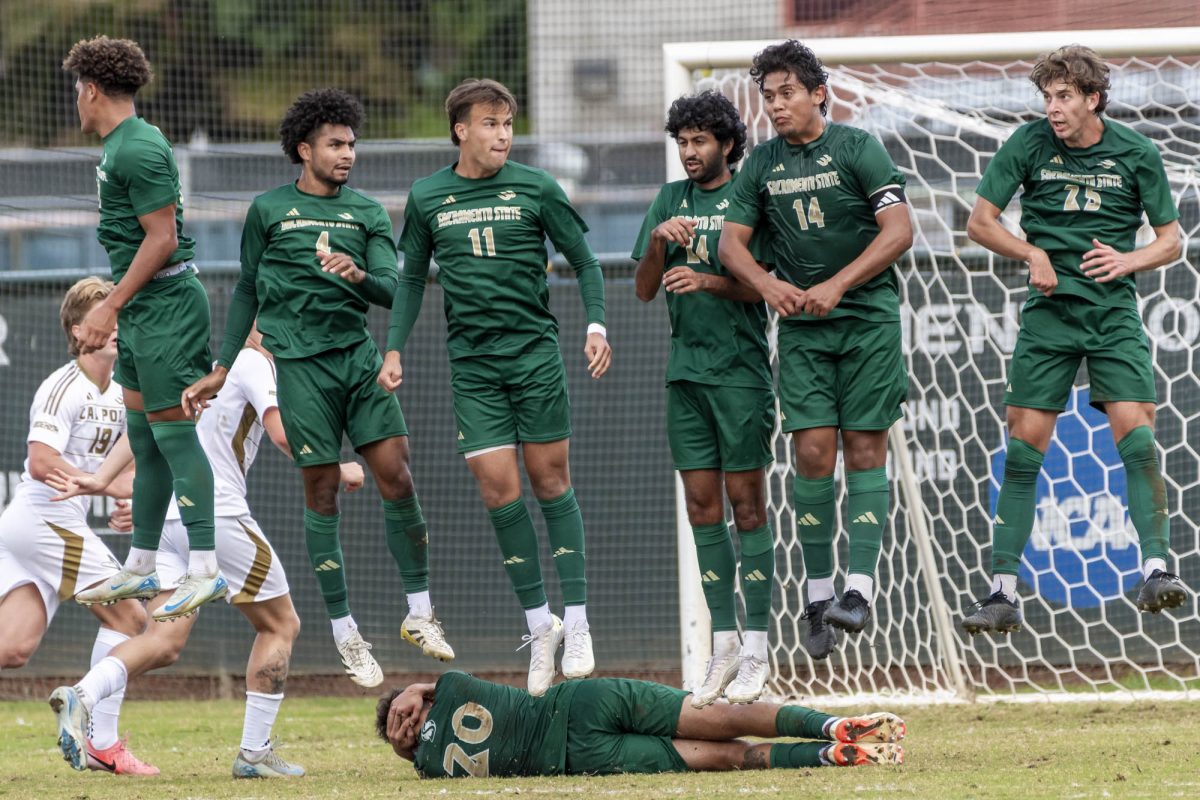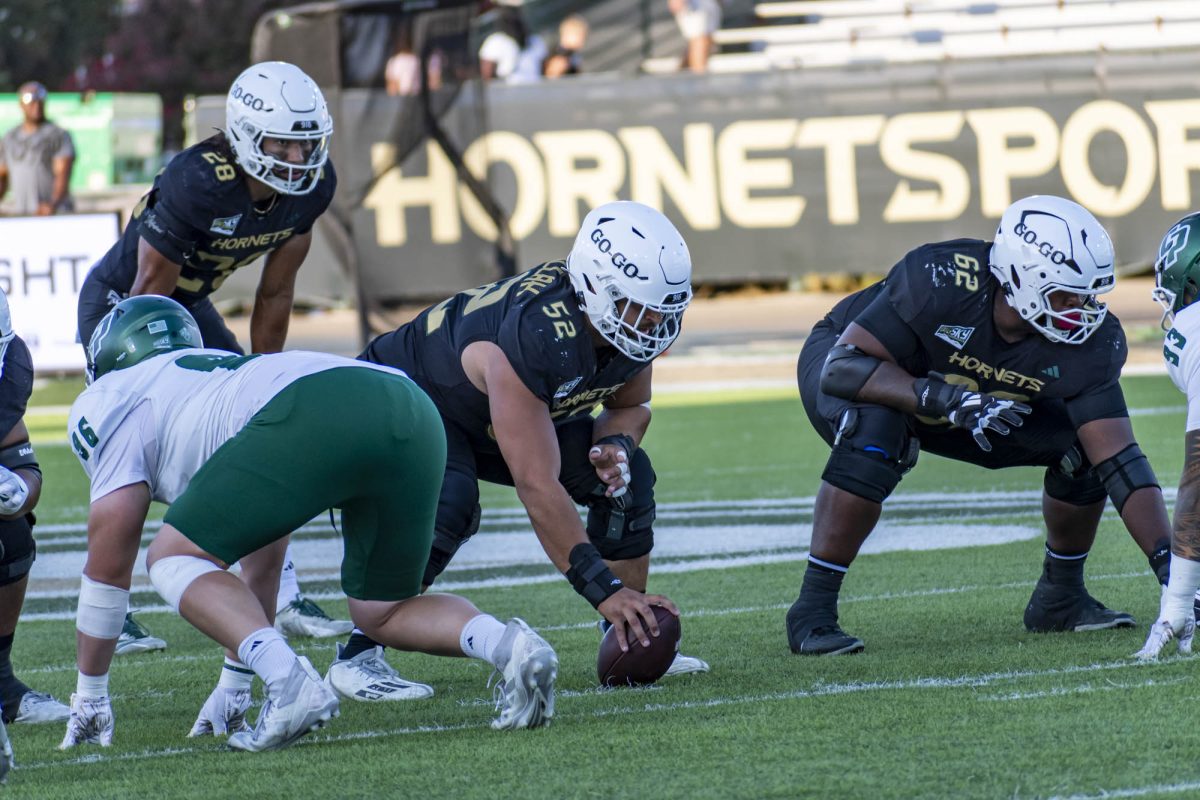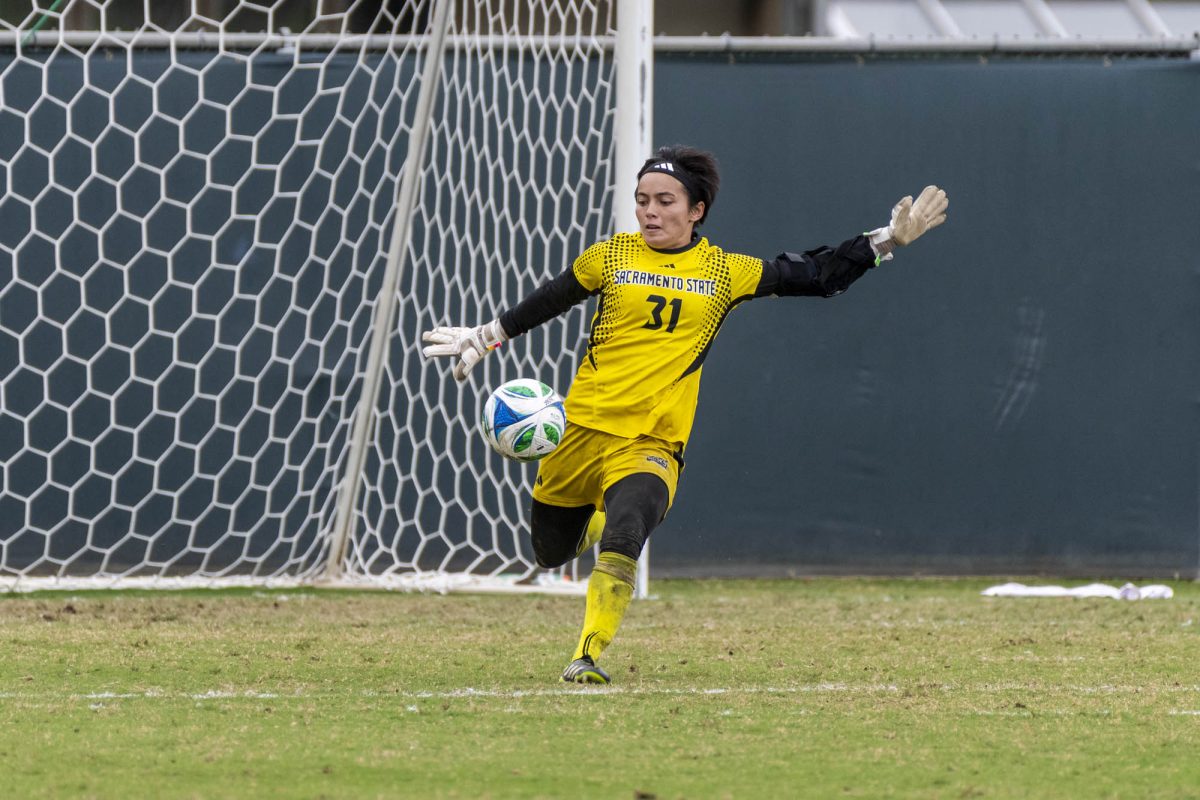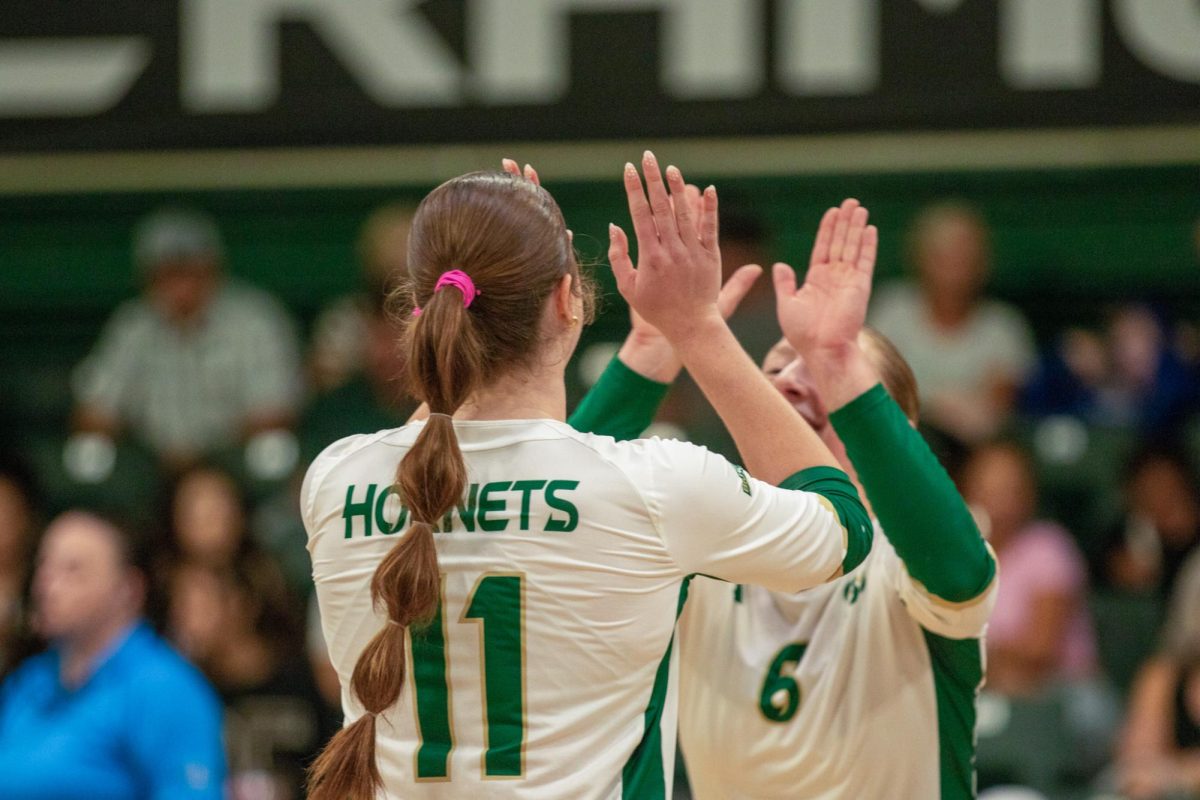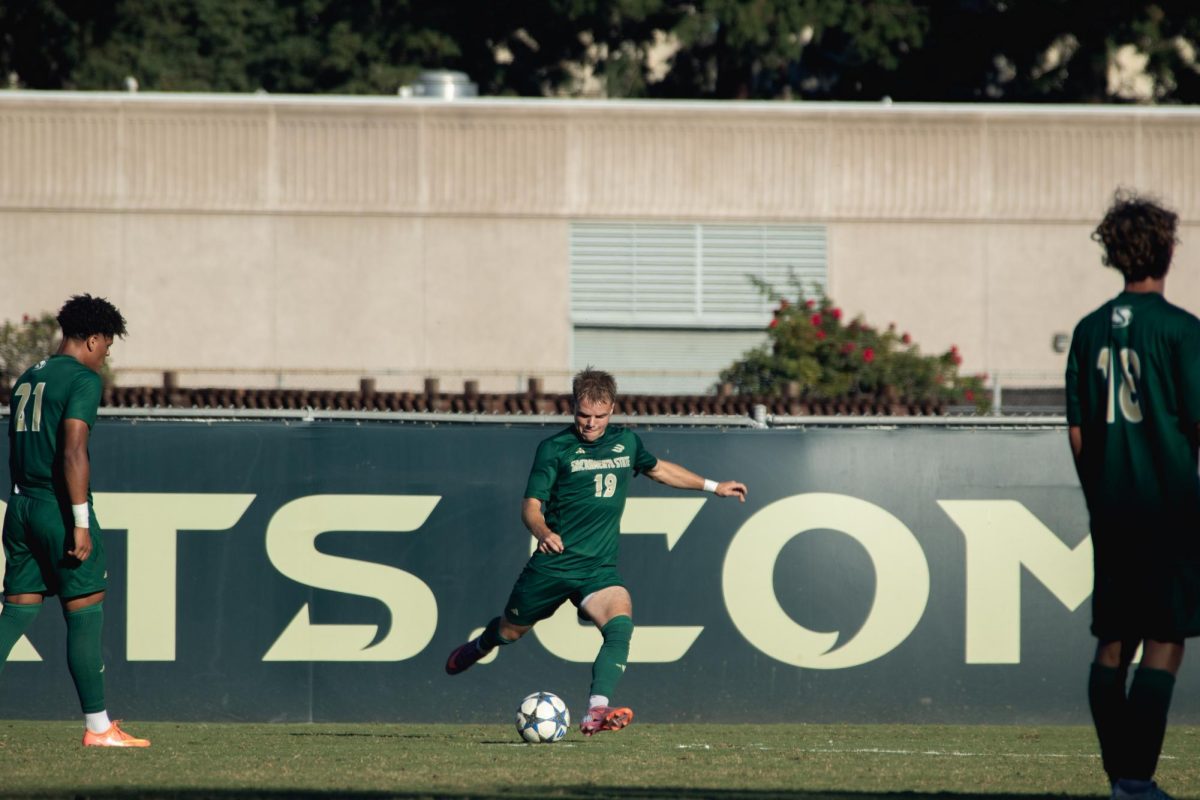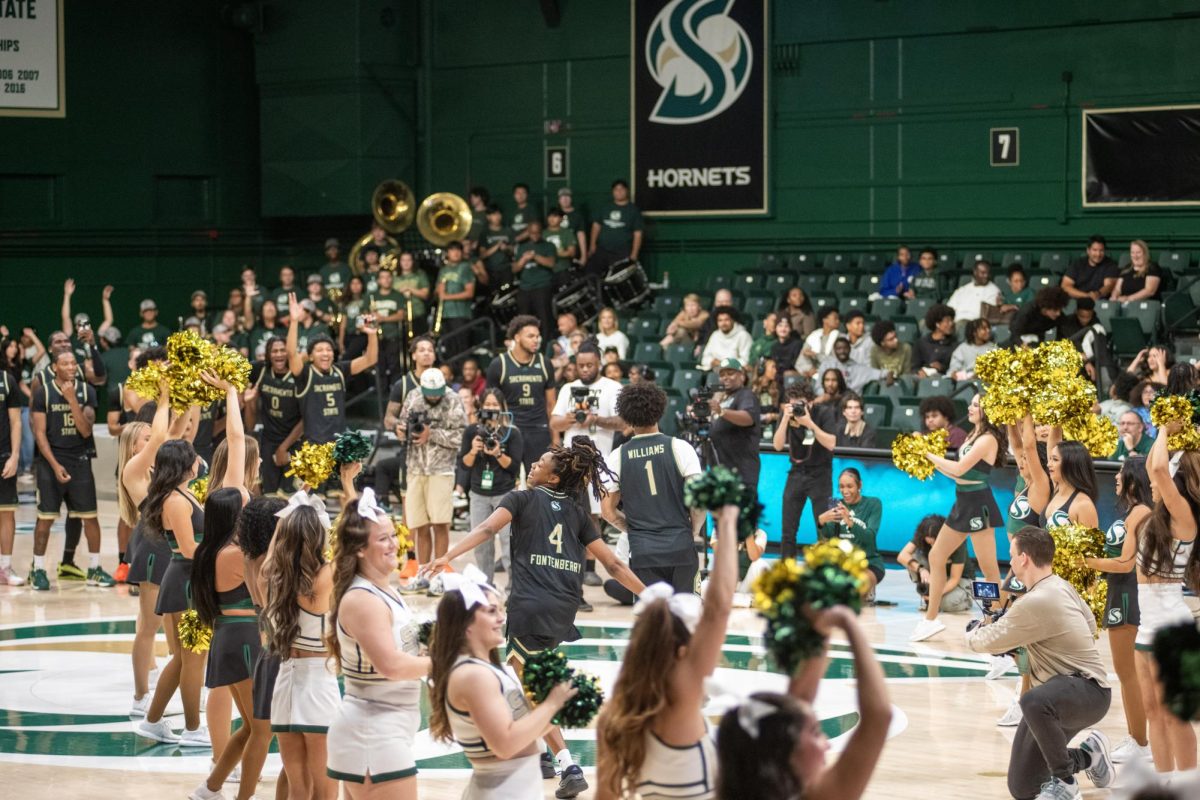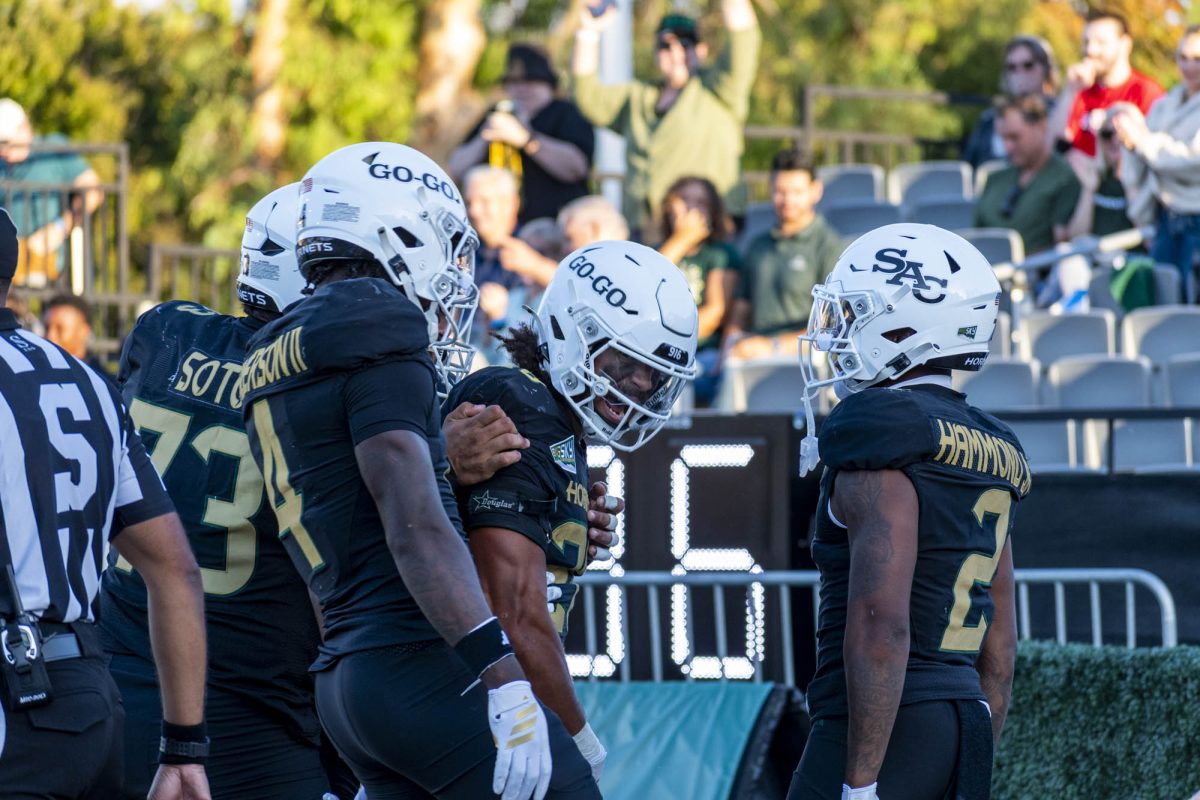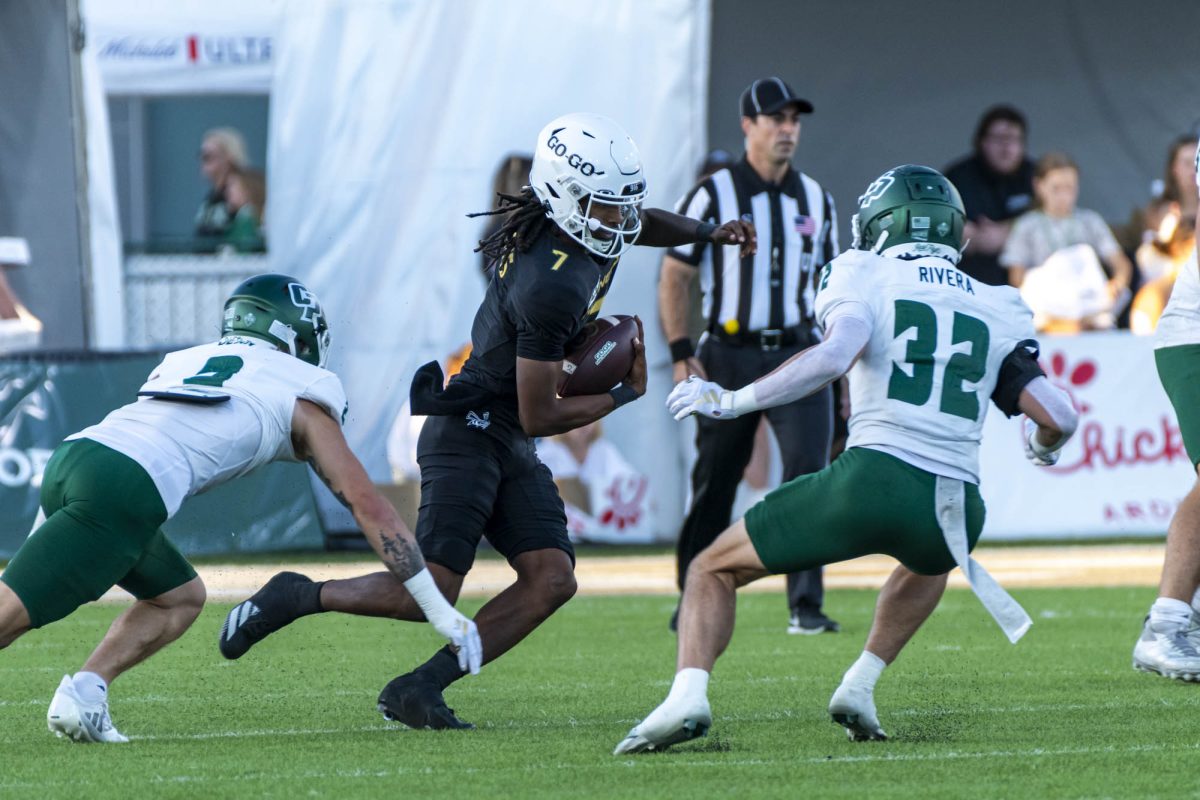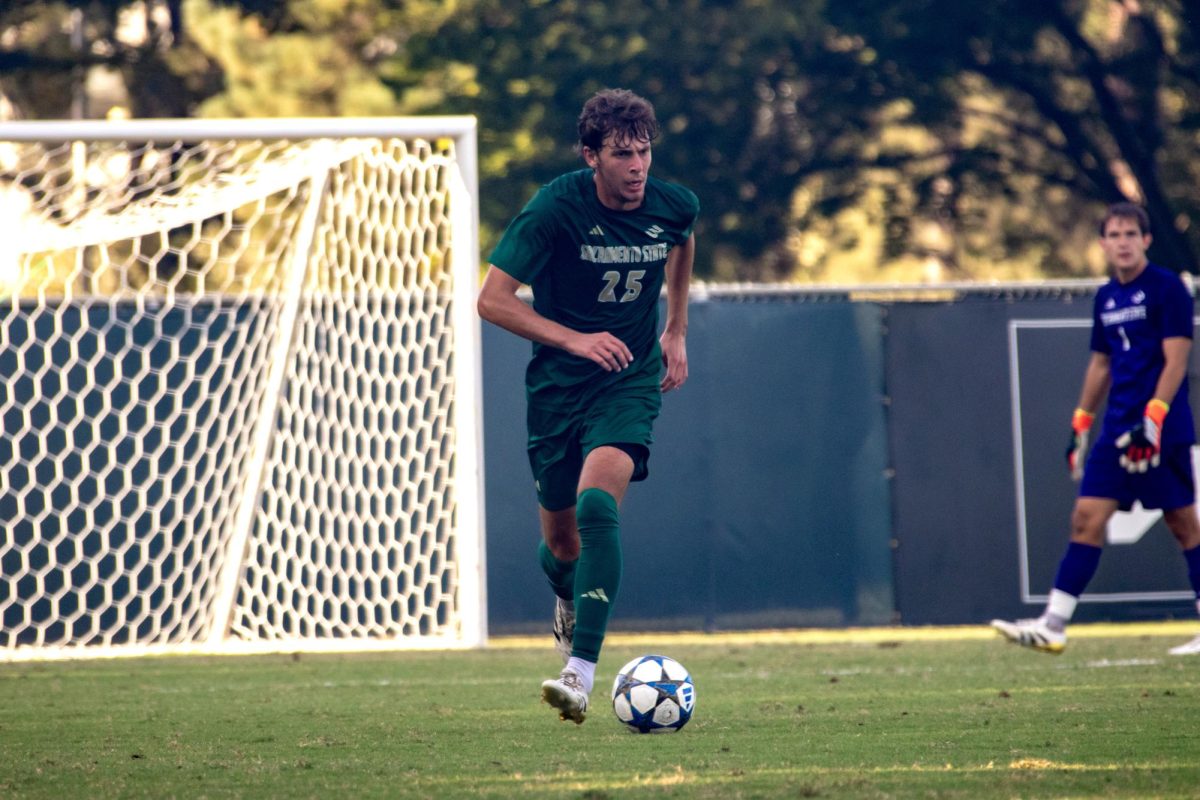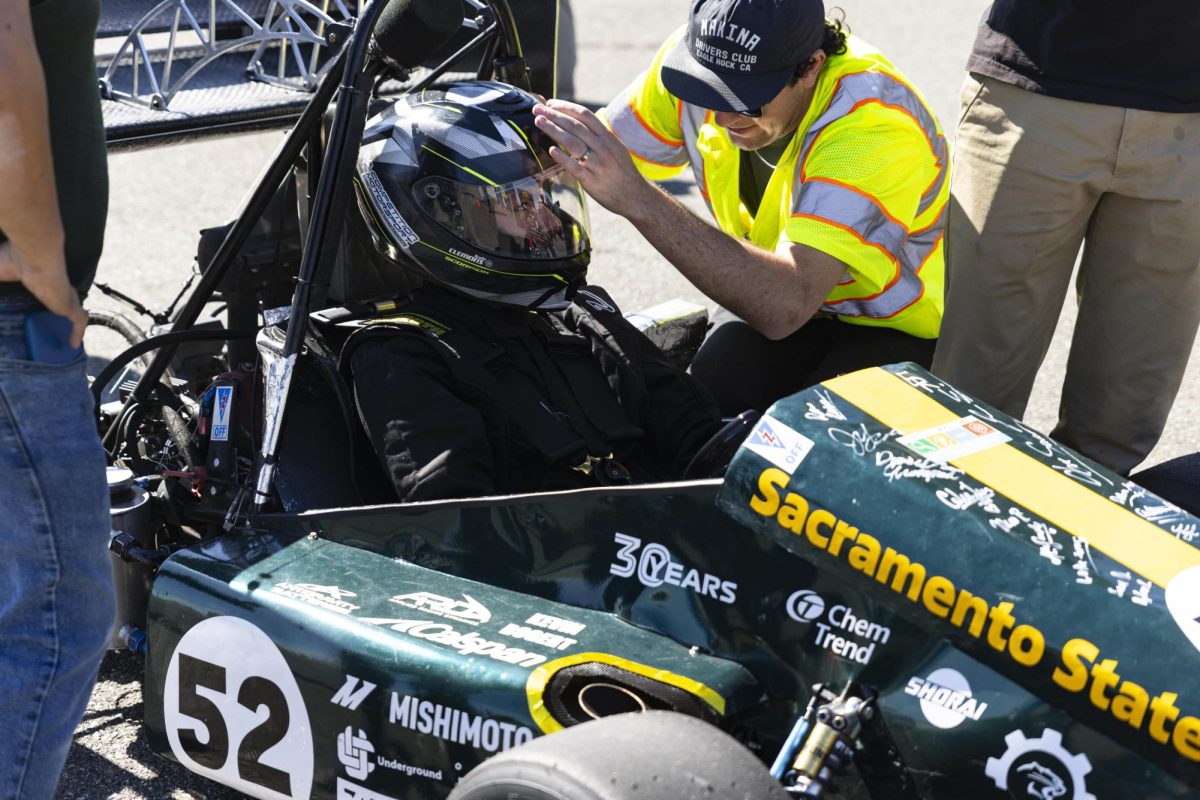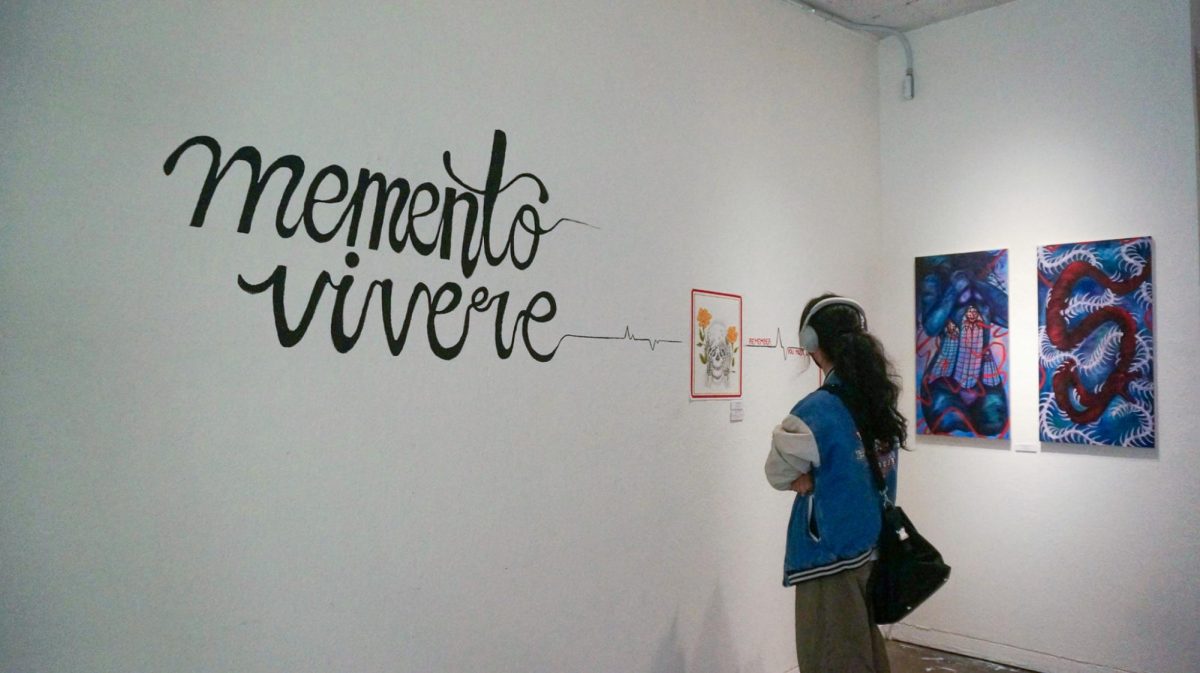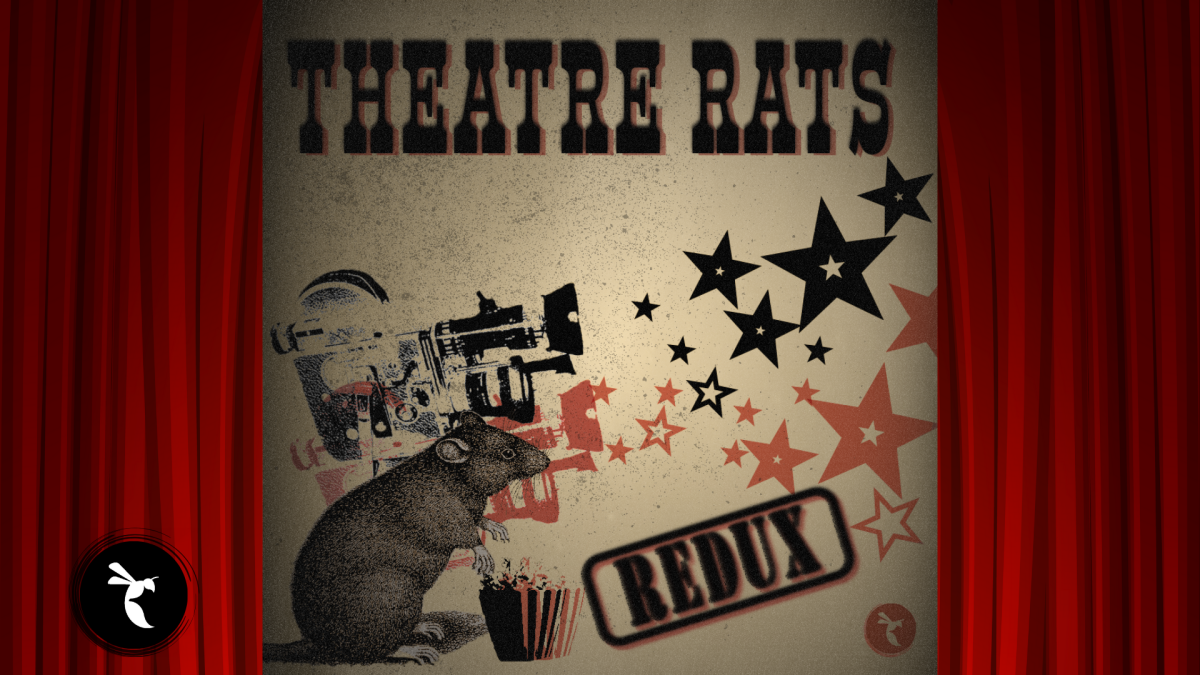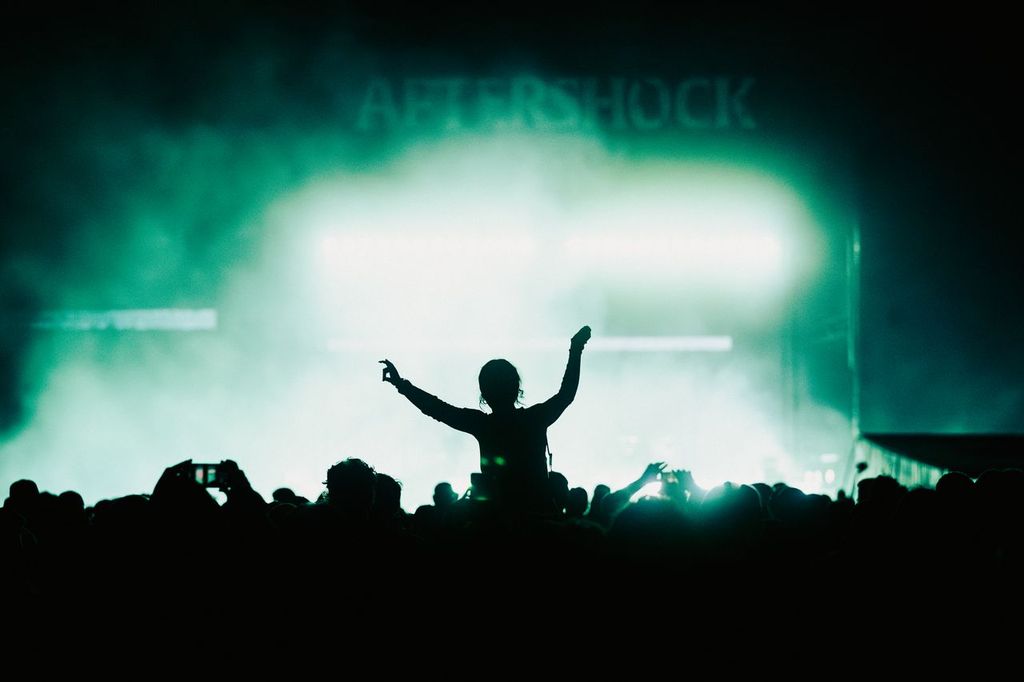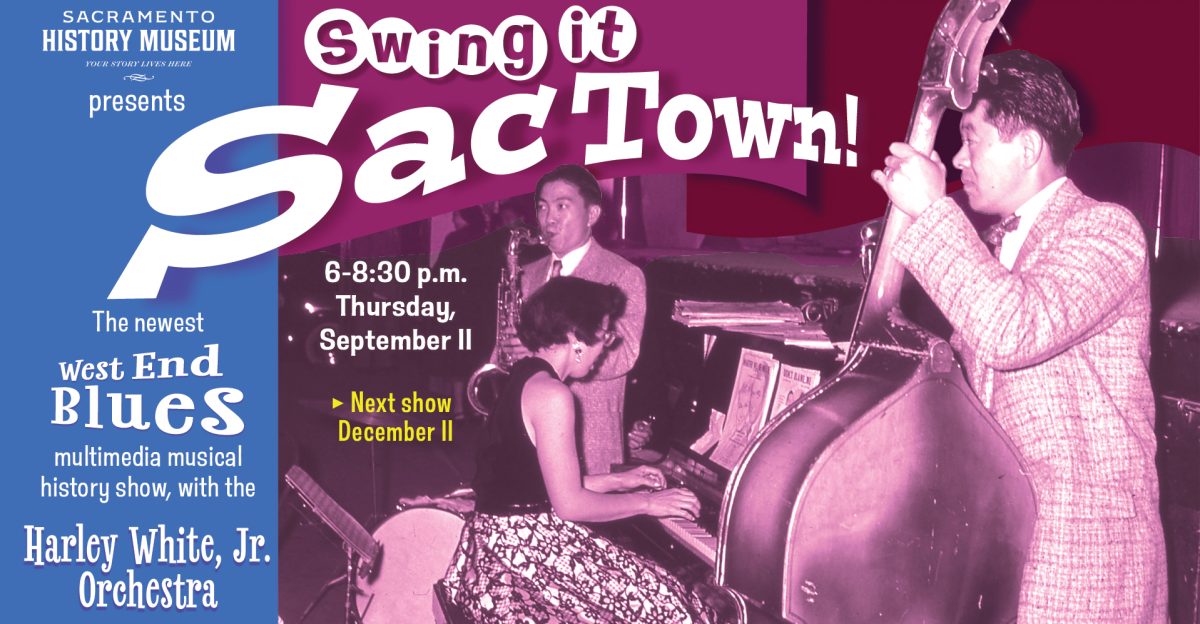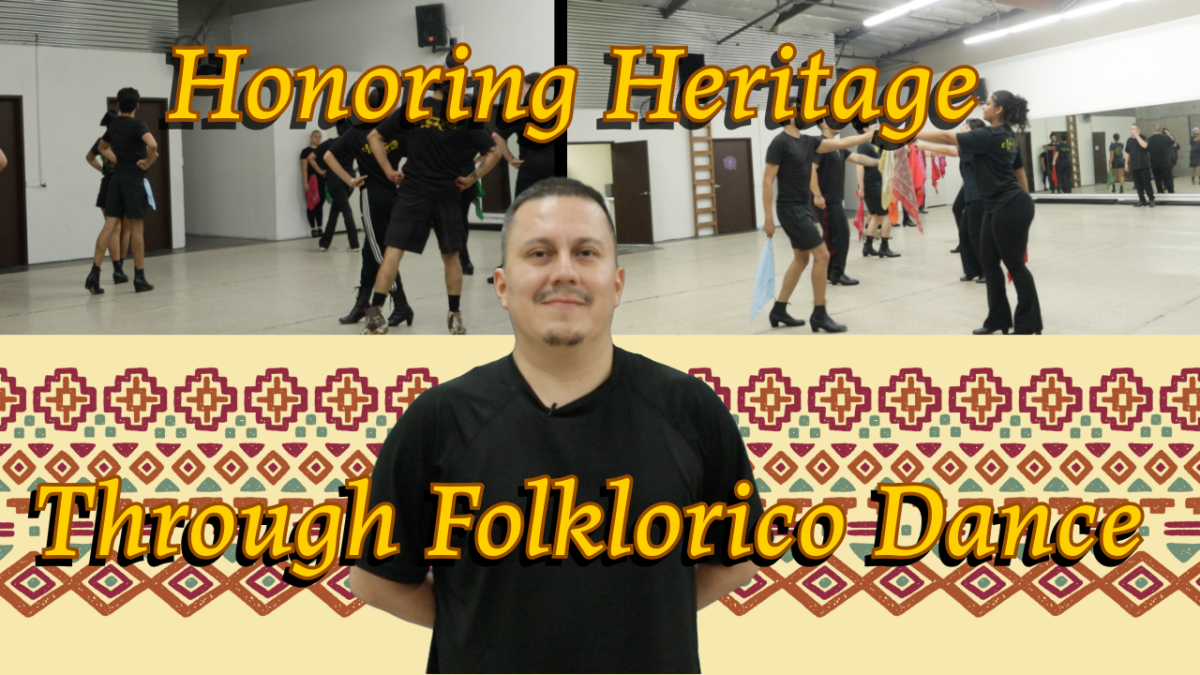South Indian music mesmerizes audience
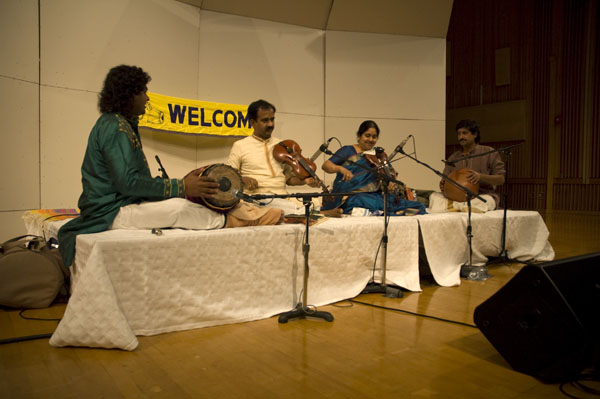
Thyagaraja Nilayam played in Capistrano Hall Friday as part of an ongoing world concert series at Sacramento State. :
September 21, 2009
I entered Capistrano’s music recital hall Friday night without any previous exposure to South Indian classical music. By the end of the concert, I was more than aware of this music, and I loved it.
Thyagaraja Nilayam, a Sacramento nonprofit organization devoted to promoting South Indian music, worked with the Sacramento State Department of Music and World Music Club to present this concert.
Ram Seshan, manager of Thyagaraja Nilayam, said that South Indian music is divine and mesmerizing. After listening to two hours of the uninterrupted concert, I began to understand Seshan’s feelings.
Looking around the audience, I noticed members with their eyes closed, not in boredom, but in pure bliss. For the musicians and many viewers, it wasn’t about listening to the music; it was about being the music.
A young girl and her mother, who sat behind me, tapped their hands in unison. They had allowed the music to engulf them, not once breaking this rhythm they had created for themselves.
If I had to describe the concert in one word, it would be hypnotic.
Violinist Lalgudi Vijayalakshmi understood the feelings I had throughout the concert.
“There’s a lot of activities and music which kindles the unwanted emotions in you, whereas classical music, of any kind, elevates your soul and makes your mind very calm and composed,” Vijayalakshmi said.
Vijayalakshmi and Lalgudi G.J.R. Krishnan are siblings and fifth-generation violinists.
Krishnan said that the violin is an extension of himself. He explained how the clear mind attained through classical music is similar to meditation, allowing individuals to forget about their daily stresses.
“It’s the intoxication of drugs, but without the side effects,” Krishnan said.
The violinists did not play through memory; they played through instinct. Not once did they look down at their instruments. It seemed the notes were trapped inside each Lalgudi sibling, waiting to be shared, with the violin as their medium.
The same could be said for Shri Patri Satish Kumar on the mridangam, and Shri Tripoonithura Radhakrishnan on the ghatam. The mridangam is essentially a double-sided drum and the ghatam is a clay pot used for percussion.
Kumar’s drumming was unlike any I had seen before. He utilized both ends of the drum at all times, keeping two different beats throughout the performance.
Both percussionists managed their instruments with incredible dexterity.
Geeta Devi, senior business major, said she really enjoyed how the sounds of each instrument complemented each other. This was Devi’s first experience with South Indian classical music as well.
Krishnan said he really enjoys playing at universities because he can reach out to a new demographic of listeners.
“Without music, life would be a desert,” Krishnan said.
Katrina Tupper can be reached at [email protected]

































